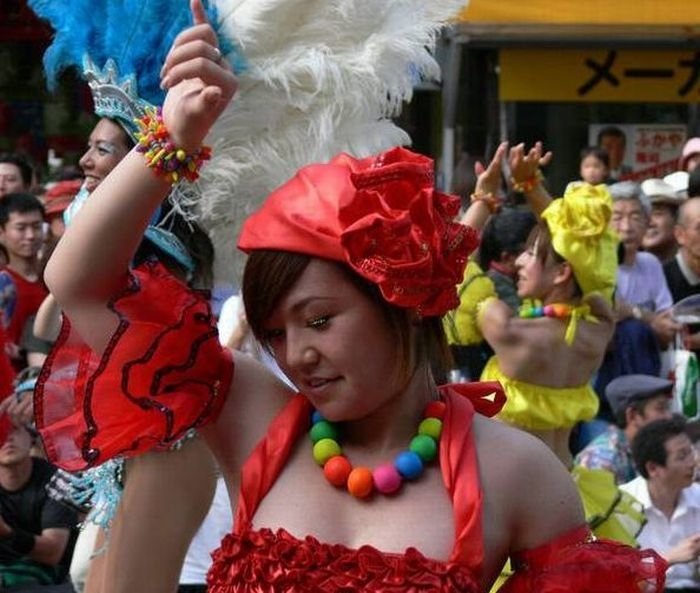|
|
Samba Carnival, Japan
|
The Samba National Day is celebrated on December 2. The date was established at the initiative of a Alderman of Salvador, Luis Monteiro da Costa, in honor of Ary Barroso, which was composed "Na Baixa do Sapateiro" - although he had never been in Bahia. Thus, on December 2 marked the first visit of the Ary Barroso to Salvador. Initially, this day was celebrated only in Salvador, but eventually turned into a national day.
Although samba exists throughout the big, multiraced country—especially in the states of Bahia, Maranhão, Minas Gerais, and São Paulo—in the form of various popular rhythms and dances that originated from the regional batuque, a type of music and associated dance form from Cape Verde, the samba is a particular musical expression of urban Rio de Janeiro, where it was born and developed between the end of the 19th century and the first years of the 20th. It was in Rio that the dance practiced by former slaves who migrated from Candy land in the northeast came into contact and incorporated other genres played in the city (such as the polka, the maxixe, the lundu, and the xote, among others), acquiring a completely unique character and creating the samba carioca urbana (samba school) and carnavalesco (Carnaval school director). In reality, the samba schools are large organizations of up to 5000 people which compete annually in the Carnival with thematic floats, elaborate costumes and original music.
During the first decade of the 20th century, some songs under the name of samba were recorded, but these recordings did not achieve great popularity. However, in 1917 "Pelo Telefone" ("By Phone") was recorded, which is considered the first true samba. The song was claimed to be authored by Ernesto dos Santos, best known as Donga, with co-composition attributed to Mauro de Almeida, a well-known Carnaval columnist. Actually, "Pelo Telefone" was created by a collective of musicians who participated in celebrations at the house of Tia Ciata (Aunt Ciata); it was eventually registered by Donga and the Almeida National Library.
|
|









